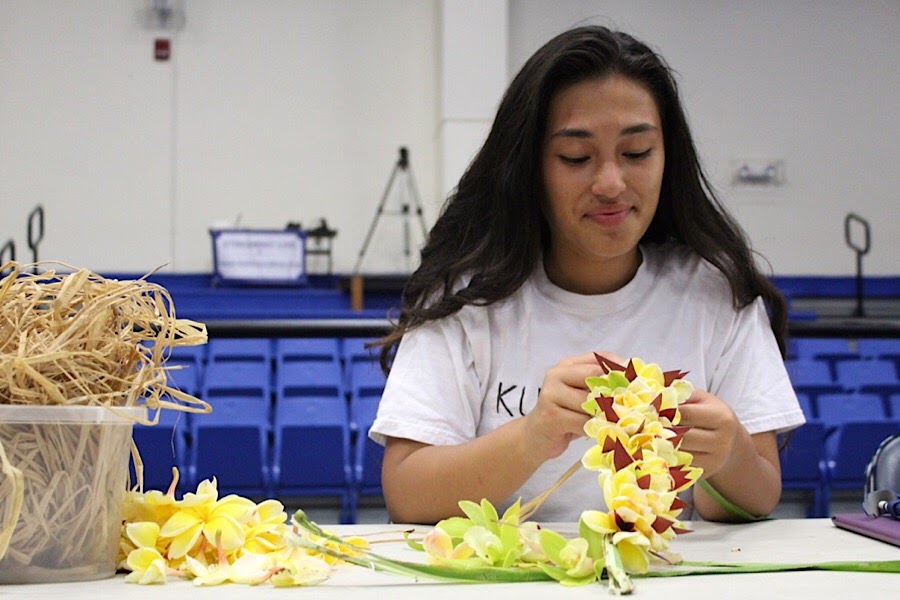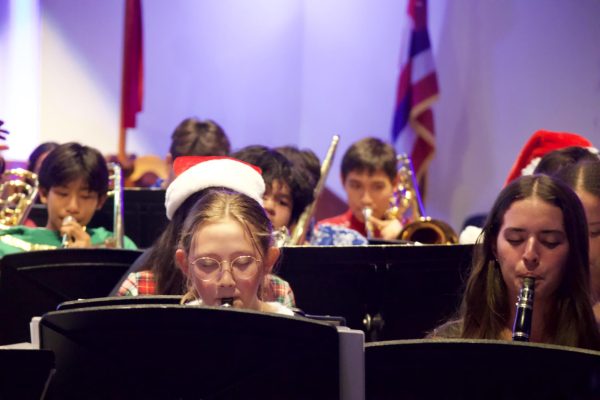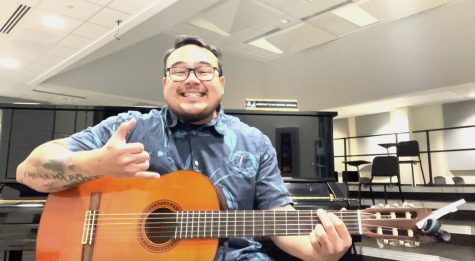ʻAha Mele: Behind the scenes
Photo by Riann Fujihara
Senior Kaitlyn Evans practices her solo number under the spotlight at a mandatory practice in Kaʻulaheanuiokamoku gym on Thursday, Apr. 28.
The 2017 ʻAha Mele received glowing reviews from those who watched it, but in addition to the months of school song practices, there is a small group of students who work tirelessly to bring it all together — the ‘Aha Mele Hōʻike performers.
While other students went home to relax and do homework on Thursday, the night before the event, students who performed attended a mandatory night practice at Kaʻulaheanuiokamoku gymnasium.
The performers consisted of Hawaiian Ensemble members as well as hula students who had to audition to be part of the show. Prior to the night practice, the students, Kumu Kalei Aarona-Lorenzo and Kumu Henohea Kāne had already dedicated much of their lunch and after school times to prepare.
“It’s always hard to put things together in the end, but it was probably just finding time to practice the individual parts that were hard,” Kumu Kalei said.
This year, the dancers had the kuleana to make a pāʻū lāʻī, pick flowers, and pay for some costume arrangements.
“I think that everyone in our line for Nā Hala were really good sports about everything even when it was some of their first times dancing hula. I was really happy to see the improvement of our number from the beginning of the year to ʻAha Mele. I’m glad we were all able to grow closer throughout each practice as well,” said Lexi Figueroa, Nā Hala line captain.
During the night practice, the students who were in the mele Nā Hala, spent time working on their ti-leaf skirts and everyone contributed to making lei for the program.
Kumu Henohea and Kumu Kalei had been wanting to do hapa-haole numbers since last year, so they chose the mele and decorations based on the golden era of Hawaiian music, the early-mid twentieth century.
“Even though there are songs that are in English, the English and the Hawaiian songs from this period are bright, and they have a lot of energy, and the things that happened in this era are like the stepping stones for what we have today as our Hawaiian music,” Kumu Kalei said.
A lot of effort and planning went into this hōʻike, and in the end, it “turned out to be a success,” said sophomore Kaiʻulani Kaniaupio.












